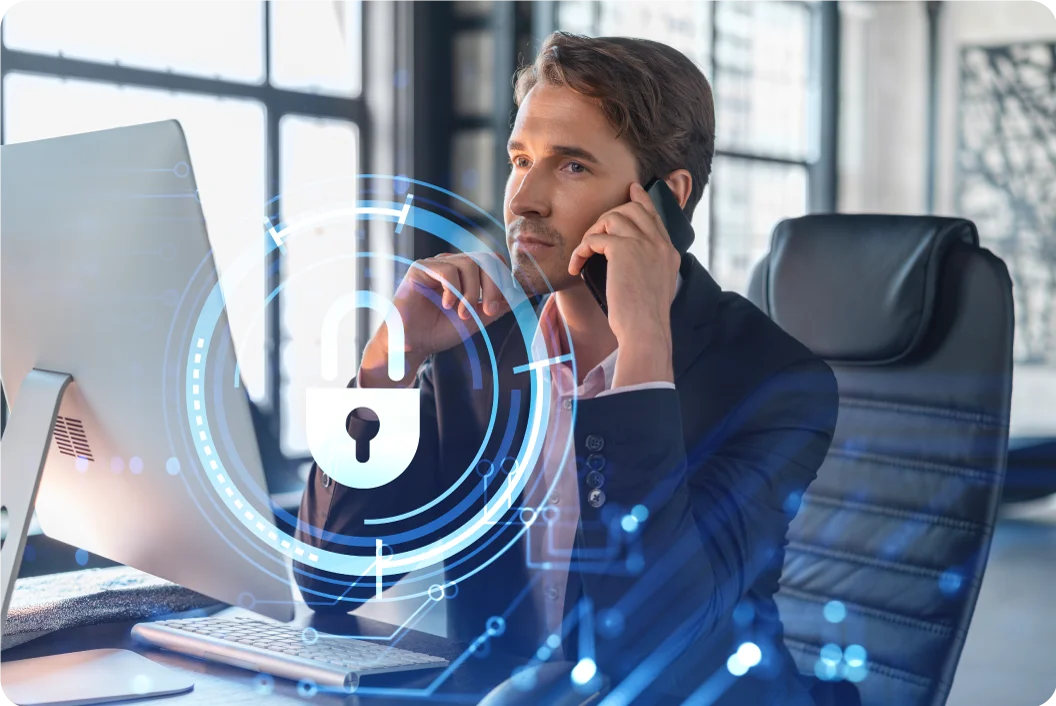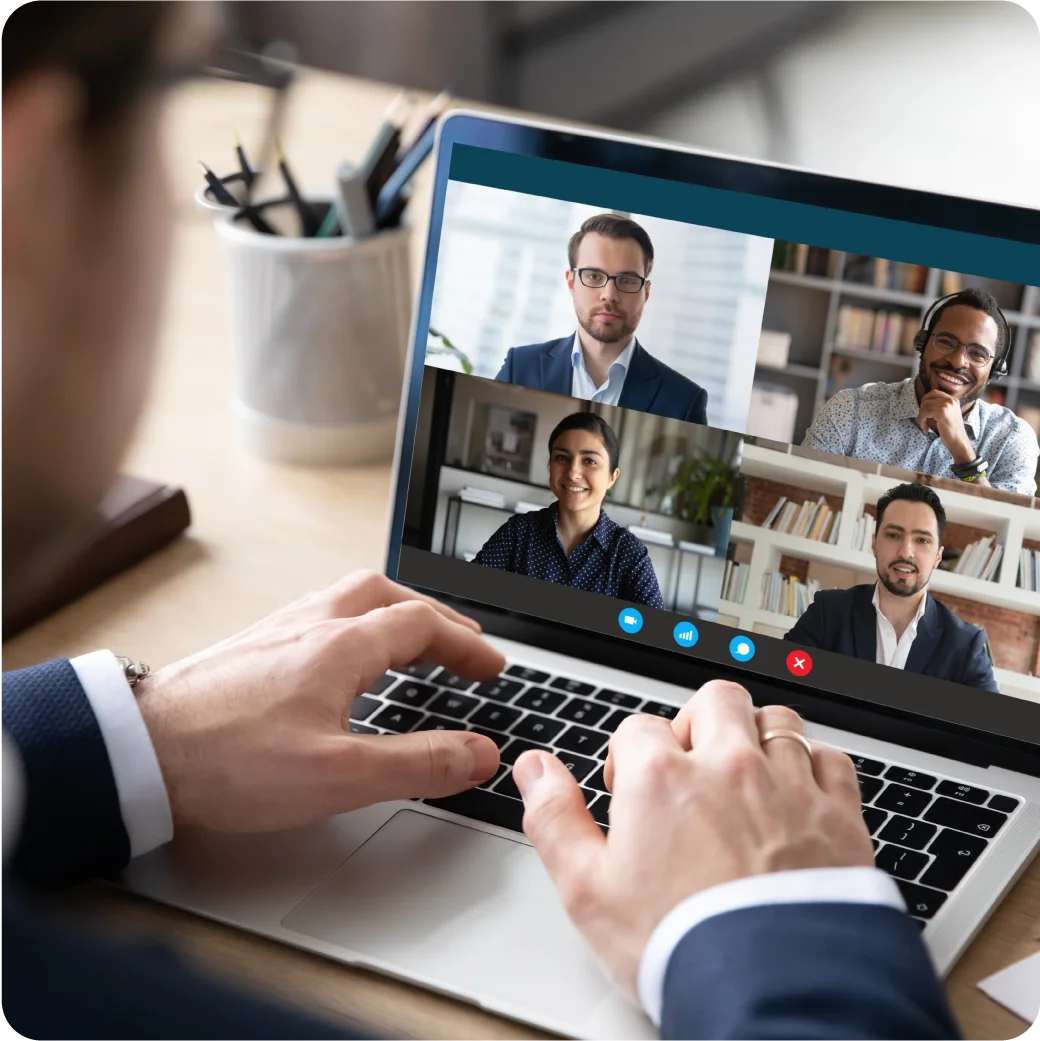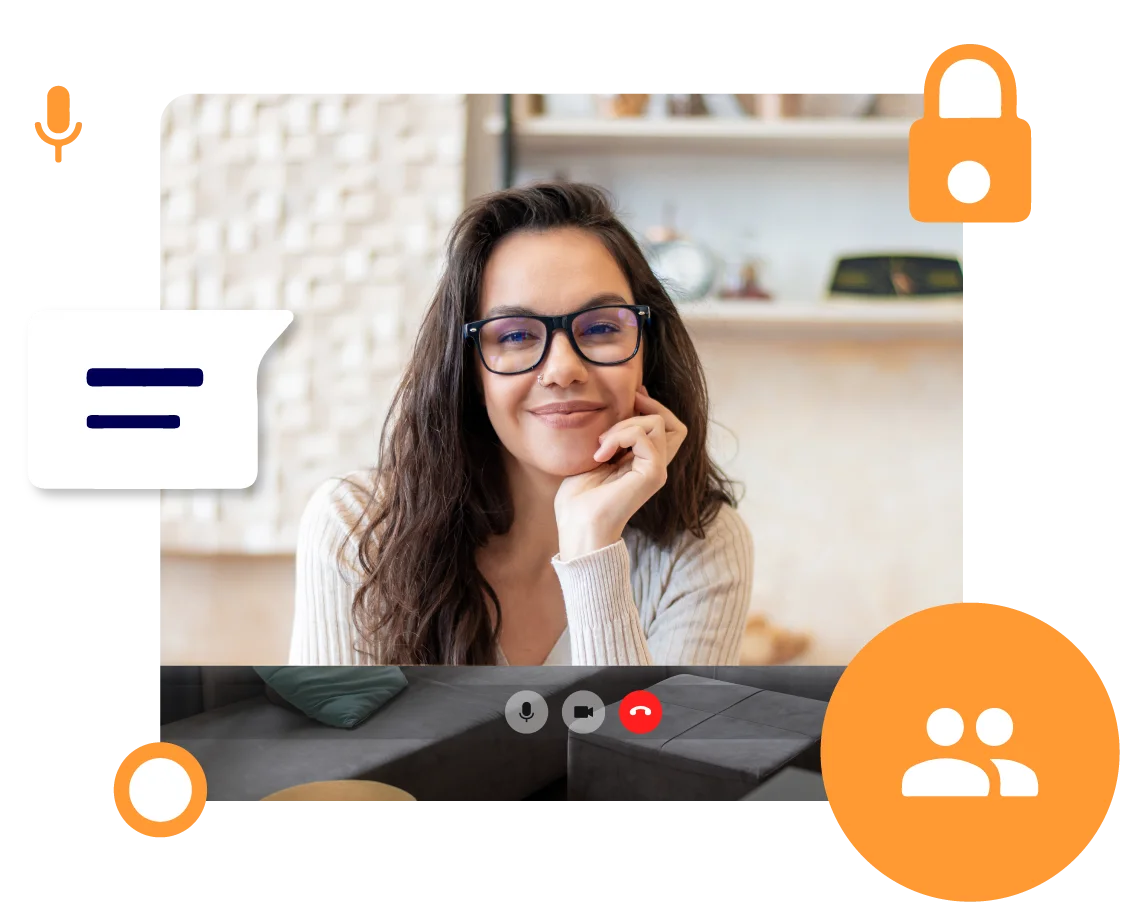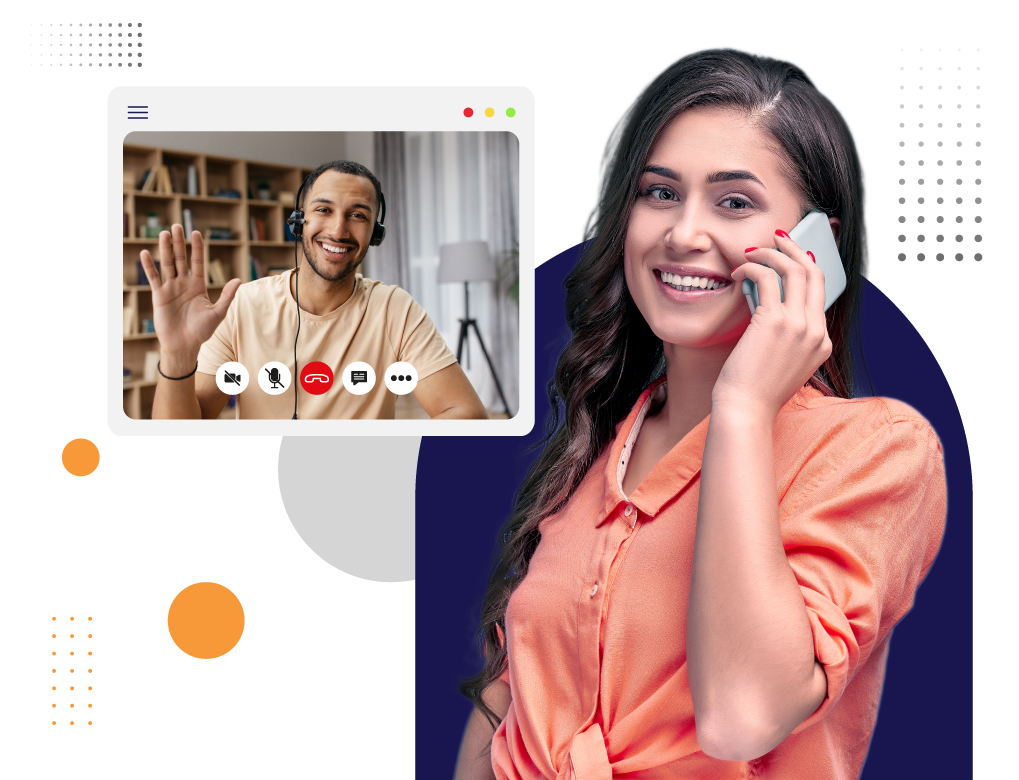
What is Dynamic end-to-end encryption?
Dynamic end-to-end encryption (D-E2EE) is an extra layer of security for video conferencing that allows the user to turn end-to-end encryption on or off whenever they want during the meeting. It restricts the third-party to read the private data.
What are the types of end-to-end encryption?
Symmetric Key Encryption
AES: It is the abbreviation for the advanced encryption standard, a globally used algorithm for the fastest and safest encryption.
DES: It is the abbreviation for the data encryption standard, which is quite an older encryption algorithm with a triple DES, which makes it strongest in terms of security.
Asymmetric Key Encryption
RSA: The full form of RSA is Rivest-Shamir-Adleman, an algorithm commonly used to maintain the reliability of a pair of keys, i.e., encryption and decryption.
ECC: ECC is the abbreviation of Elliptic Curve Cryptography, which offers high security to RSA via shorter keys that can make it faster and more productive.
Hybrid Encryption
It is the combination of symmetric and asymmetric encryption where there is a key for encryption with the public key (recipient). The recipient can use the private key to decrypt the session key and further use it to decrypt the message.
Perfect Forward Secrecy (PFS)
It is the primary and private key of communication that remains secure. Some protocols, such as the Diffie-Hellman key exchange, are combined with ephemeral keys in it.
Secure Messaging Protocols
Signal protocol: Some apps, such as WhatsApp and messaging apps, use this protocol to combine asymmetric and symmetric encryption with PFS.
OMEMO: The complete form of OMEMO is multi-end message and object encryption, an extension of the XMPP protocol that provides E2EE.
Blockchain Encryption
It supports blockchain tech, so the user can manage the encryption keys and create high security for communication data without the aid of a central authority.
Quantum-Resistant Encryption
It is the algorithm specifically designed to keep the data secure against the attacks of quantum computers.
Homomorphic Encryption
It is the tech that supports computations for data encryption without the need for decrypting. It fosters the security of data in cloud recordings.
Attribute-based Encryption (ABE)
It has the attribute of data encryption that allows it to access and control restricted data.

Why are our end-to-end encrypted video meetings different?
Supportable on All Devices
Businesses can use our Vitel Global app for end-to-end encrypted video meetings on desktops, mobile phones, and tablets via different browsers such as Chrome, Mircosoft Edge, etc.
Supportable for All Kinds of Meetings
Users can optimize the use of dynamic end-to-end encryption for small conferences, large conferences, one-to-one meetings, and more.
How to use dynamic end-to-end encryption features?
-
Download the app on your device and choose "More" in the meeting.
-
Select the "TURN ON end-to-end encryption" icon from the menu.
-
Now, choose "Turn it on" from the pop-up option that appears to confirm.

Benefits of dynamic end-to-end encrypted data
The benefits of dynamic end-to-end encrypted data are as follows:
Boosting Confidentiality
Encrypted video calls ensure that data remains unchanged and inaccessible to unauthorized parties until permitted by the service provider.
Enhanced Security
End-to-end encryption significantly reduces the risk of data breaches, safeguarding sensitive information.
Reduction of Espionage Risks
This encryption prevents unauthorized access, minimizing third-party involvement.
Data Integrity
Dynamic end-to-end encryption keeps data unaltered during transmission, rendering it unreadable to outsiders.
Protection Against Government Requests
Encrypted data remains secure and confidential, protecting user privacy.
Increased Trustworthiness
End-to-end encryption bolsters data security, enhancing user confidence in the Vitel Global application.
Frequently Asked Questions
-
How can I protect my video conferencing data via dynamic end-to-end encryption?
The dynamic end-to-end encryption feature of our Vitel Global app can protect your recorded data by using robust algorithms that will make your data transmission safe and secure between two participants. However, if a third party tries to access the data, they must have a decrypted key to understand it.
-
What do I need to enable using this end-to-end encryption feature during my Video conference?
You must go to the settings to turn it on for end-to-end encryption. Moreover, it gets automatically activated in some cases.
-
If the video call is already encrypted, how would I know?
You can check out your padlock icon or notification to verify whether your video call is encrypted. You can also look at the indicators during the video conference to ensure that E2EE is active.
-
Will the video call be recorded & encrypted in a clear HD form?
Yes. However, it may have a slight impact on the quality of the video as the encryption and decryption processes will take some load. However, the Vitel Global app provides the best and most optimized call-recorded quality.
-
Can I encrypt my group video call?
Yes, the user can record and use the end-to-end encryption feature during group video conferencing. The keys are managed so that all the participants can utilize the data from the beginning of the meeting until the end.
Intensify the next level of security of your video call recording data with Vitel Global.
Get associated with our Vitel Global video calling app, which has a strong VoIP Security feature that will aid you in protecting your right to privacy.
Live Demo


